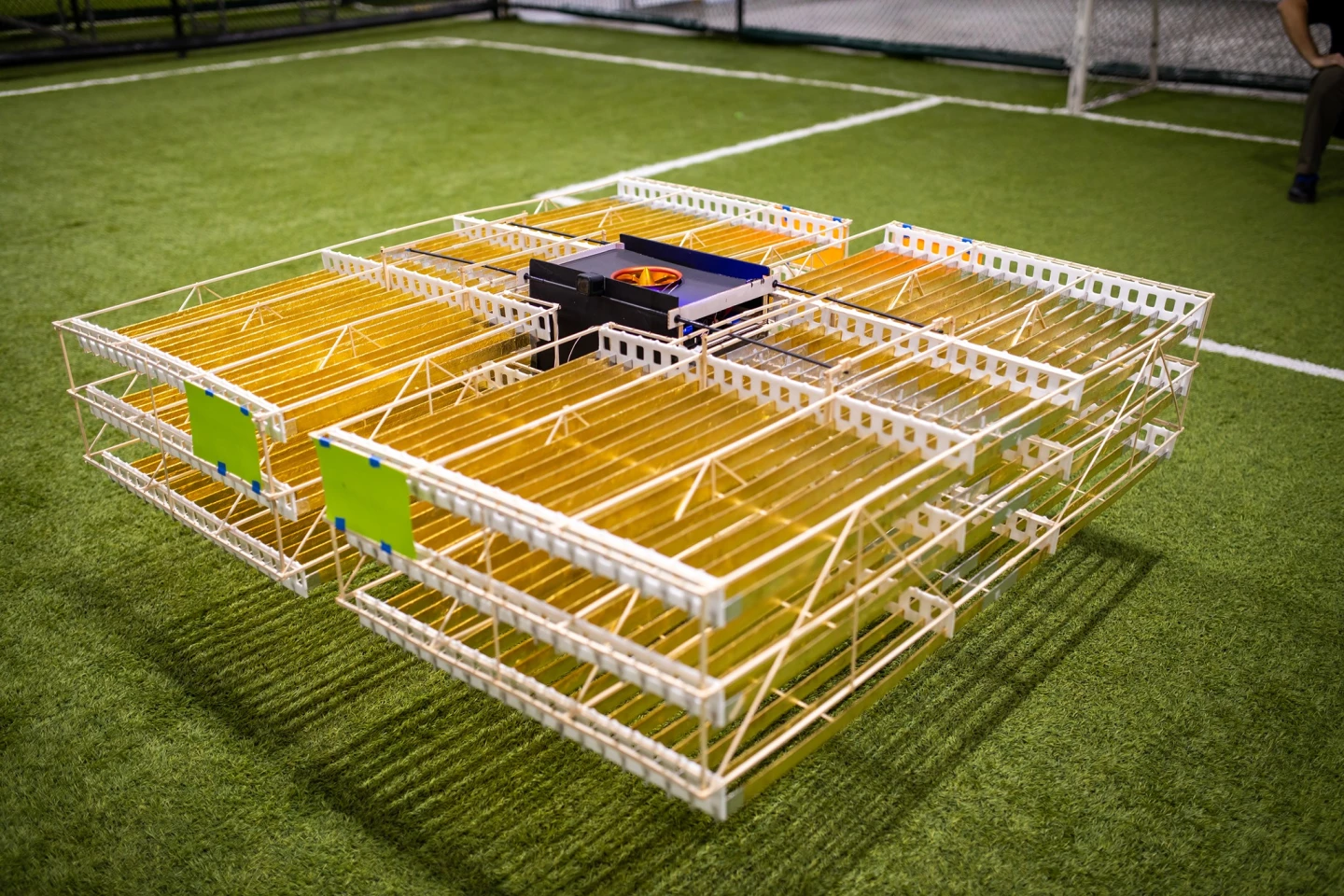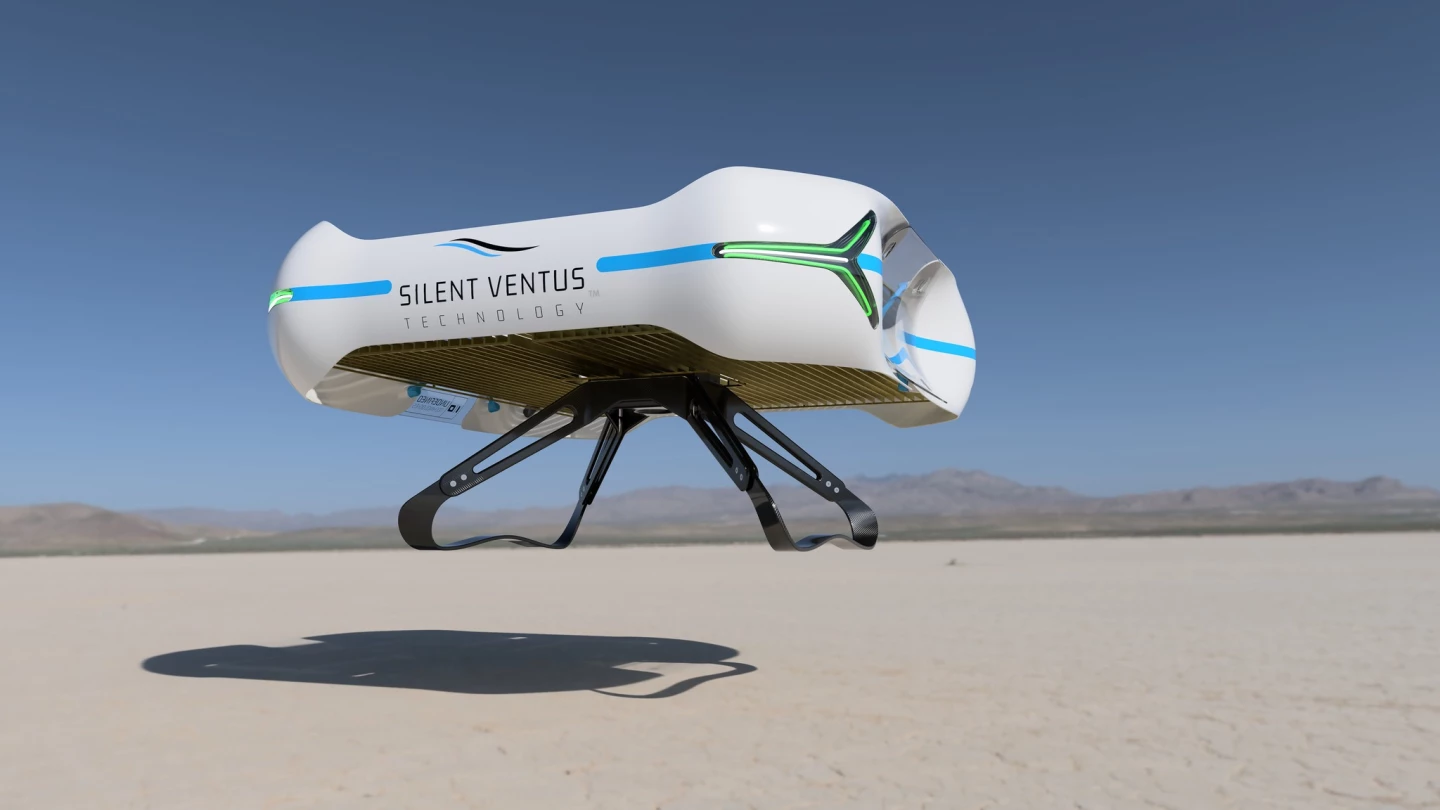Florida's "silent" flying dish-rack, powered by ionic propulsion, is on track for commercial rollout in 2024, according to Undefined Technologies, which has released new outdoor flight test video. We remain curious, but unconvinced it'll be viable.
The "Silent Ventus" drone doesn't use propellers to fly. Instead, its entire broad structure creates two stacked grids of electrodes, designed to create high-voltage electric fields that can ionize the oxygen and nitrogen molecules in the air, freeing electrons to give them a positive charge, and then propelling these downward to create an "ionic wind" that can produce thrust.
It's not new; ionic propulsion has been used in space, and as we pointed out when we first saw the Silent Ventus drone project, for a few very small-scale terrestrial projects as well, one of which was used to levitate Orville the mouse in 2003. Undefined says its "Air Tantrum" technology yields "higher levels of thrust, up to 150% compared to current ion thruster technologies."

The company first showed off its tech in 2020, claiming a 25-second flight, but showing only a few wobbly seconds in a "test lab" video that looked suspiciously like it was filmed in a small box, despite the loud protestations of prominent height markers up each wall. The company subsequently said that this test drone made about 90 dB of noise – a lot closer to "hairdryer" than "silent."
Earlier this year, it claimed a two-and-a-half-minute indoor flight, at a reduced noise level of 85 decibels, and released a 39-second video as proof.
Now, the company says it's flown a prototype for a solid four and a half minutes, documented in true Undefined fashion with one minute, 17 seconds of edited video, as embedded below. It says it achieved a noise level below 75 dB, whatever the video might sound like, and it's calling for further investment toward a cargo delivery drone product it says will fly for 15 minutes and make less than 70 dB by the end of 2023.
"This 4+ min flight required advances in the chemical composition of the batteries that can now provide us with higher energy densities," says Undefined's Lead Aerospace Engineer Thomas Benda Jr. in a press release. "This improvement is part of our efforts to target lighter weights.”
It's unclear whether hitting 15 minutes of endurance (as per the roadmap) will require further advances in battery chemistry, or whether this company has other tricks up its sleeve. And it's unclear what kind of endurance can be expected from a delivery version of the aircraft carrying a useful payload. It's also undefined exactly how far from the drone Undefined is taking its noise readings; even the Joby S4 eVTOL air taxi stays under 65 dB when the measurement's taken 100 m (330 ft) from the vertipad.
Undefined says its "silent" 70-dB drones will cause far fewer noise complaints in urban cargo delivery services than propeller-forced designs – although established drone delivery company Wing has already fielded complaints about its drones, which were recorded at 69 dB at a 15-m (50-ft) distance back in 2019.

We have other reservations. We don't know how Undefined can control yaw with its design, absent the typical torque reactions from rotating propellers – although it sure seems capable of spinning in the company's render video. The necessarily large airframes required would appear to present quite a sail for a decent breeze to catch, which might make these things a liability in anything but ideal weather.
They're clearly a fair bit larger than prop-based multicopters, even without a payload, and they're also more fragile, making them harder to transport and store. Every time we've seen one fly, it's looked wobbly, and every time we've seen one land, it's come down hard enough to shake the propulsion racks about like Jell-O.
I'm not gonna lie, I'm also put off by lily-gilding press release headlines like, "Ion propulsion drone proves its commercial viability," and presentations that spend seven minutes hyping up the problem, but only two giving a vague outline of the solution, along with precious little technical detail. Each insignificant on its own, all these little things add up to a certain whiff that makes me uncomfortable.
Still, it's undeniably cool to see these things flying on electric wind alone, and for all the uncertainties and issues we've got, it sure does seem that these guys have built an ion-drive drone prototype capable of flying outdoors and well above the tree-line. We'd want to see the thing in person and do plenty of due diligence before throwing any investment money down, but whether or not this thing makes it to wide-scale commercial use, it's definitely a neat curiosity.
Source: Undefined Technologies








